Alaska Fish & Wildlife News
May 2020
Record Herring Event Highlights
Roe on Kelp Fishery
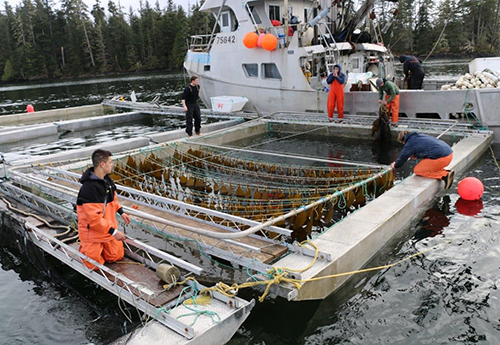
A record year for spawning herring was good news for the roe on kelp fishery.
Roe on kelp is a unique fishery - the fish are released after they are caught, and seaweed is a key part of the product, coated with herring eggs. Prized in Japan as komochi konbu, it is served in sushi or as a small appetizer, a bite-size wafer of kelp coated on both sides with the tiny yellow-tan fish eggs. Alaskans also harvest roe as a subsistence food.
The focus of the fishery in 2020 is the south end of the southeast Panhandle in the waters west of Prince of Wales Island. The communities of Craig and Klawock are nearest to the fishery. That's the area where the record spawn was documented.
The commercial fishery begins in mid-March, when macrocystis kelp is gathered and carefully placed in floating net pens or impoundments (pounds) in anticipation of the herring spawning event. The timing and location are dependable enough that fishermen (pounders) can plan where and when to set up their gear. When the herring arrive, the fish are seined, introduced to the pounds to spawn for about a week, then released. The eggs stick to the kelp blades, which are collected and layered with salt in totes.
Hundreds of millions of herring spawn in fairly shallow water along miles of coastline. A week into April 2020, fishery managers documented 30 nautical miles of spawn in a single day in the waters near Craig. That set a record for the largest single-day active spawning event in the area. By mid-April, that had almost doubled.
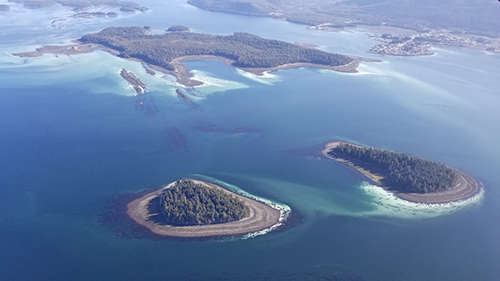
“This year in Craig we documented 56 miles of spawn, an unbelievable amount,” said Ketchikan-based state fishery biologist Bo Meredith. “That’s the highest we’ve ever seen, almost double the previous record.”
To manage the fishery, biologists fly over the spawning areas, dive in the waters, and catch herring with jigs and nets. They’ve worked for decades with the pounders to fine-tune the fishery, document trends and assess the resource. By measuring the swaths of cloudy white herring spawn sweeping through blue-water inlets and clinging to small islands, a cumulative total is counted. The previous record set in 1989 was 31.7 nautical miles.
Pacific Herring
Pacific herring spawn year after year in the spring and can potentially live a long time for a small fish, if they escape the many predators that target them. Virtually everything bigger than a herring eats herring, from eagles to sea lions. In fact, early in the season biologists watch predators like sea lions to help track herring movements.
To better understand the herring stocks for this fishery, biologists catch herring using cast nets and herring jigs. They determine the age of the herring to see how the fish from a particular year (the cohort or age class) moves through the population over time.
“Last year we had an unprecedented recruitment event, a huge influx of three-year-old herring,” Meredith said. “That’s (the age) when you typically start to see them – when they are sexually mature and come into the spawning stock. Last year, based on cast net samples, 81% were three-year olds. They would be from the 2016 spawning event.”
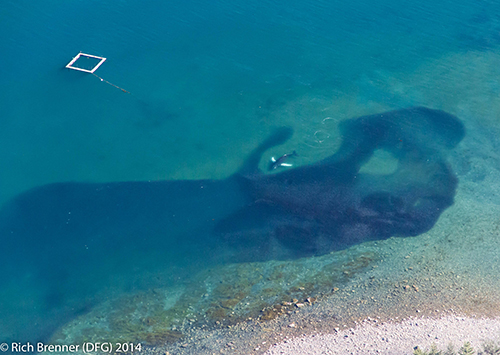
That implies this year the majority of spawning biomass would be four-year olds, and preliminary aging results from some samples in 2020 indicate that is a good assumption
Meredith said once a herring is eight years old or older, they class them as eight-plus, and they make up a small percentage of the overall population. But biologists do know the actual age.
“We were finding some 13- and 14-year-old herring, and there was a 15-year-old herring in Sitka a few years ago,” Meredith said. “That’s a long time for a herring to survive whales and salmon and all the predators.”
Biologists look at eggs to estimate the amount of adult herring. Rather than determining a number of herring – in the hundreds of millions or greater – biologists estimate the biomass – thousands of tons of herring.
“The guideline harvest level was very high this year, 11,000 tons, allocated between the winter-based fishery and the roe on kelp fishery,” Meredith said. The winter herring fishery, for food and bait, harvested 895 tons, and the rest was allocated to the roe on kelp fishery.
The kelp
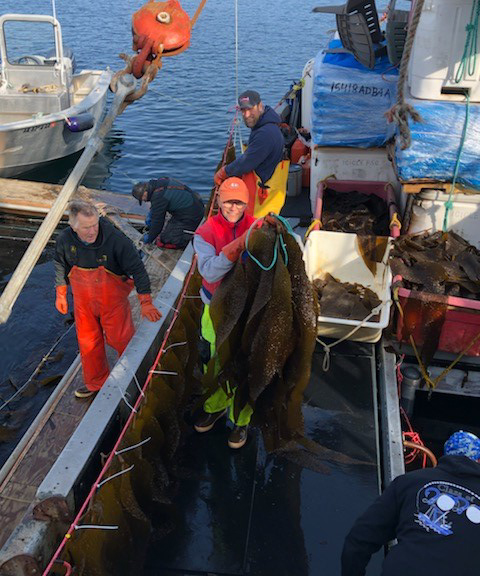
Macrocystis kelp is pretty well known, although people may not know what they are looking at. Meredith said the classic kelp forests depicted in underwater photographs are typically macrocystis kelp. As a diver, he’s seen them first-hand.
“You hear about the ones in California getting 50-60 feet high, it’s beautiful,” he said.
Kelp allocation is a way to manage the herring harvest, he said. The pounders get a permit to harvest the kelp, in addition to their fishing permit. Overharvest of kelp is not an issue. “They’re pretty resilient, there’s not a lot of concern with the macro harvest,” Meredith said.
50,000 to 80,000 blades of macro are harvested in southern Southeast Alaska waters in March of the year by pounders.
If a fisherman wants to use his permit to put his kelp in his pound, he’s allowed 600 blades, if two double up in a pound, they’re allowed 900 each. The pound is typically 20-feet by 20-feet square, and 30-feet deep. Up to four permit holders can share a pound, but clearly there’s a limit to how much kelp can hang in about 12,000 cubic feet of seawater – especially when 20 tons of spawning herring are added.
The fishery
About 140 permit holders set up 75 pounds in the waters near Craig this year. Many of the pounders have been in the fishery for decades.
Mike Pilling got into the fishery in the early 1990s when he lived in Petersburg and has been a pounder ever since. Now living in Juneau, he’s worked in a number of fisheries, as a crabber, seiner, longliner and Bristol Bay gillnetter. He likes the cooperative nature of pounding.
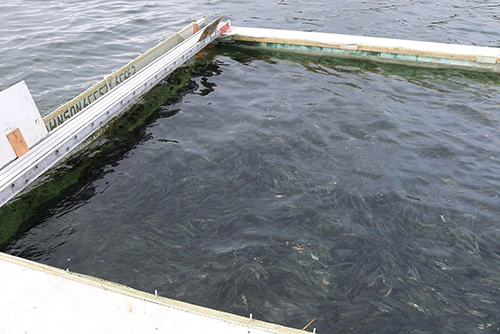
“Our group started with five of us and it’s grown to 14, with brothers and sons and family members joining,” he said. “I don’t think any group is bigger than ours. What makes the fishery unique is it’s so cooperative. You can’t do it by yourself.”
The 14 permit holders in the group set up and manage seven pounds. They work together to gather the kelp, assemble the pound structure and containment webbing, seine the herring, monitor the spawning fish, then harvest and brine the product.
“In order to seine the fish, it takes about six guys,” Pilling said. “If you had a permit and a seine boat you could hire a crew, but there’s not enough money in it for that. A few people have individual pounds, but not many.”
“Once we get set up, we throw two names on each pound,” he said. “Since we’re a cooperative, in the end, we divide the money up equally.”
Native Alaskans traditionally harvested herring roe by placing hemlock branches in areas where herring spawn. After the spawning event they’d pull in the egg-encrusted branches. This is still practiced. Pilling recalled that Native Alaskans were instrumental in launching what became the managed roe on kelp fishery in the area.
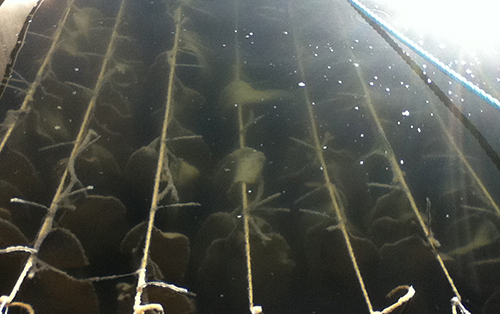
“The fishery down there started by Klawock, the tribe started the fishery,” he said. Klawock is a community just a few miles north of Craig on Prince of Wales Island. Pilling said the early years were rough, as pounders and fishery managers figured out how to effectively and sustainably harvest the resource.
“It used to be an unbelievable amount of work, as hard or harder than any fishery I know,” he said. “The first pen designs were horrible. Early on, in the late 90s, there was a lot of disruption in the fishery, it was new, and groups broke up. Things finally settled down. Over time we learned how to make the work easier. Fish and Game had a lot to do with it, they figured it out too. It’s more stable now. It’s pretty fun and has the social aspects.”
Another thing that’s changed in recent decades is the influx of sea otters, once common in Southeast Alaska but extirpated by fur harvesters in the 1800s. A few hundred animals from a surviving Aleutian Island population were re-introduced to Southeast Alaska in the early 1970s and have thrived and grown to number in the tens of thousands, and are particularly abundant in southern Southeast and along the outer coast. Feeding heavily on sea urchins – which eat kelp – they’ve benefitted this particular fishery.
“The kelp beds are just huge now because of the sea otters, there’s no kelp shortage,” Pilling said.
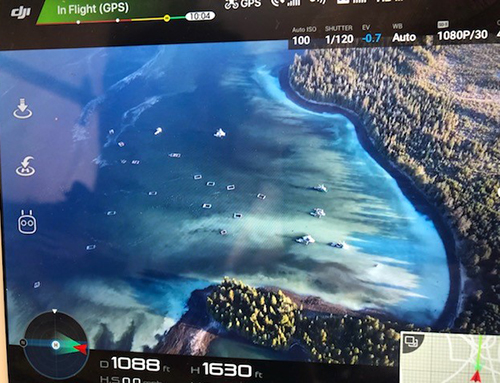
Some pounders will adjust the depth of the kelp in the pound throughout the week that the fish are spawning, to maximize the deposition of roe on the blades. His group does not. Over the years, they’ve experimented with different set ups and shapes, but keeping to the same cubic footage size. So rather than a 20 x 20-foot pound 30-feet deep, they prefer a 20 by 40-foot pound, 15-feet deep, which is easier to load.
“Since it’s shallower, we don’t have so much room to adjust,” he said. “We have two racks of kelp, 15 feet deep, and might have a rack down eight or nine feet.”
When herring are introduced, rather than having the seine boat bring a net loaded with live herring next to the pound, the fish are seined and then transferred to a tow pound, which is brought up to the pound to load in the herring.
“We don’t want to kill fish,” Pilling said. “We fish as close to our pounds as possible, really close, so we don’t have to move them very far. They come in strong right by our pens for four or five days.”
Pounders are allowed to introduce herring to the pound over four days. After seven days the herring are released.
“You’re not allowed to release fish for those four days,” Pilling said. “You could easily stuff those pens full on day one, we don’t do that, we try and put some in all four days. Then you let them go. If you’ve done a really good job and are careful you really kill very few fish. Fish and Game figures we’ll kill a lot of fish, but most of them swim away. The sea gulls and sea lions try and get them, they get the slow ones.”
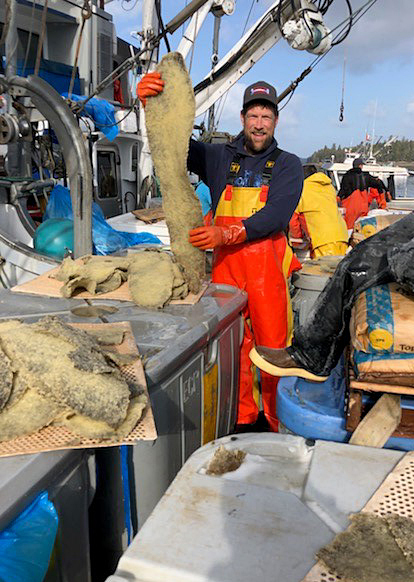
“In a perfect world they all live,” said Meredith, the fishery biologist. “There is very good survival in these pound structures, but not all, and the department assumes a 75% mortality. A conservative estimate for the health of the stock is to assume a high mortality.”
Biologists estimate there are about 20 tons of herring in a pound structure - so with about 75 pound structures, managers assume a mortality of 1,125 tons of herring.
As a diver and a biologist, Meredith has seen herring spawn from above and below the water. Acres of spawn drifting with the current suggests that the event is chaotic, but he said the herring are pretty deliberate.
“The herring are not willy-nilly spraying milt and eggs. The herring lay individual eggs on the substrate, and the males add their milt. Underwater it’s more organized than what you see on the surface. Underwater you can see a row or line of eggs going up in a line on a substrate.”
During the week the impounded herring are spawning, a lot of eggs are deposited on the pound itself, especially the netting.
“The web has a lot of eggs on it,” Pilling said. “You have to leave the web in place for a month with the corner down so fish can get out, so the eggs can naturally hatch off. A lot people leave the pounds in the water and haul them on the last day. We buoy off our webs, and bring the pound structures home to Petersburg, but the nets are still out there. It’s such a huge load we want to get the heavy stuff out of there while we have all the manpower.”
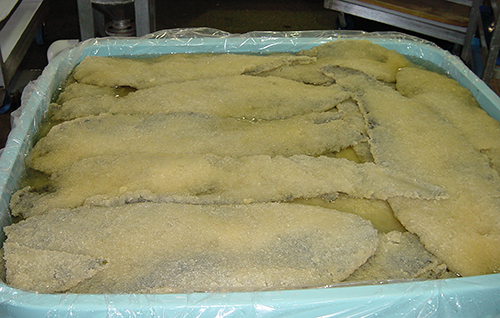
There are four herring roe on kelp fisheries in Southeast Alaska, with two limited entry permits – one for northern Southeast and one for southern Southeast. The southern permit allows for the pounding near Craig and also in Ernest Sound north of Ketchikan; the northern permit allow pounding in the waters near Tenakee and off Peril Strait in Hoonah Sound. Only the Craig fishery is open.
“The others haven’t been open for the past few years because forecast was below the threshold for the fishery,” Meredith said.
Pilling has both permits and has pounded in all four areas. There were times when they tried to do all four in one year, but it was grueling and better to just do one in the south and then one in the north. The northern herring spawn event is later than the southern event, by a few weeks at most.
“We’d do Craig first, then Ernest Sound, then Hoonah Sound and then Tenakee,” he said. “It worked if you didn’t sleep. For the most part we did Craig first, and then Hoonah Sound. We still have those permits but haven’t fished them in a while. Anymore the only fishery viable is Craig, and it’s pretty healthy.”
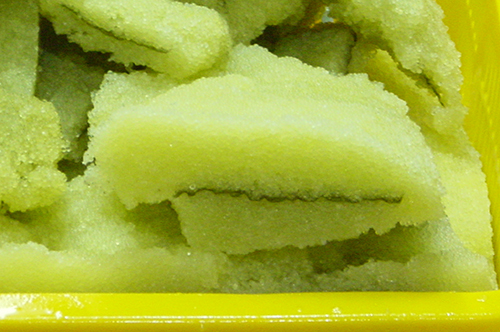
The product
Roe on kelp is eaten in season by Alaska Native people and others who appreciate it. The commercial product goes to Asia, mostly to Japan, where it’s known as komochi konbu.
Brining is the final step for the pounders. The roe-encrusted kelp blades, now about an inch thick, are layered in large fish totes with salt. A 500-gallon tote full of product requires about 450 pounds of salt. It’s delivered to the processor, who grades it as one through five and jumbo. Pounders are paid more for a thicker product. The average price for eggs on kelp the past two years has been around eight dollars a pound.
“The whole brine thing is to prevent the eggs from eyeing out,” Pilling said. “If you left them, I think they eye out on day eight. They want to turn into fish, so you preserve it, stop the clock.”
Residents of coastal communities that qualify for subsistence can get a permit to harvest roe on kelp. A subsistence permit allows 32 pounds per person or 158 pounds per household.
“I gather it myself, you can get a permit; for branches you don’t need a permit,” Meredith said. “I don’t usually get more than a couple blades; two to four pounds is enough. I eat it fresh, cut it up into little chunks and eat it with a little soy sauce or wasabi.”
Subscribe to be notified about new issues
Receive a monthly notice about new issues and articles.
